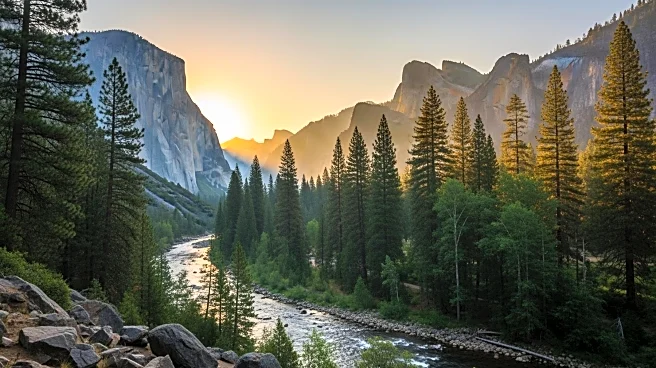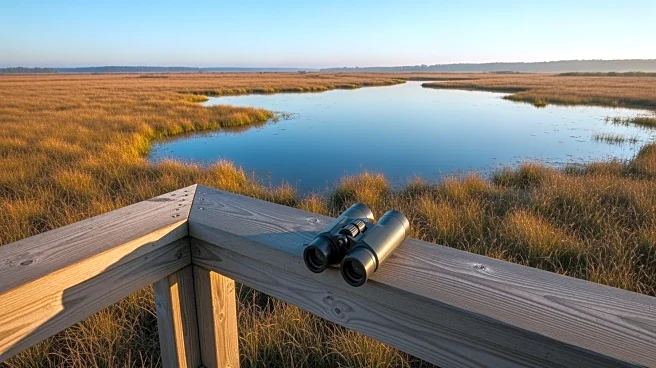What's Happening?
The Trump administration has decided to keep national parks open during the ongoing government shutdown, despite the lapse in park system funding. This decision mirrors a similar approach taken during Trump's
first presidency, when parks remained open during a 35-day shutdown over border wall funding. The policy has received bipartisan support due to the economic importance of parks to gateway communities. However, park staff are largely furloughed, leaving sites vulnerable to vandalism and damage. The lack of maintenance and emergency response capabilities has raised concerns among former park officials and advocacy groups.
Why It's Important?
Keeping national parks open during a shutdown poses significant risks to the preservation of natural and cultural resources. With most staff furloughed, parks are ill-equipped to handle emergencies or prevent damage, which could have long-term consequences. The decision to keep parks open may also prolong the shutdown by reducing pressure on lawmakers to resolve funding issues. Additionally, the use of entrance fees to fund operations during the shutdown violates the Antideficiency Act, potentially leading to legal challenges. The economic impact on local communities is mixed, as they benefit from visitor spending but face uncertainty due to limited park services.
What's Next?
Advocacy groups and former park superintendents have urged the administration to close parks to prevent further damage. Some states and nonprofits are stepping in to fund operations temporarily, but this may not be sustainable. The administration's approach could lead to increased scrutiny and pressure from Congress and the public. If the shutdown continues, parks may face growing maintenance backlogs and resource damage, affecting their long-term viability. The situation highlights the need for a more sustainable funding model for national parks to ensure their protection during government shutdowns.
Beyond the Headlines
The decision to keep parks open during a shutdown reflects broader debates about the role of federal agencies and the prioritization of public resources. It raises ethical questions about the balance between public access and resource preservation. The reliance on state and nonprofit funding could shift perceptions of federal responsibility and lead to calls for privatization or alternative management models. The situation underscores the importance of clear communication and contingency planning to manage public expectations and protect national treasures.











